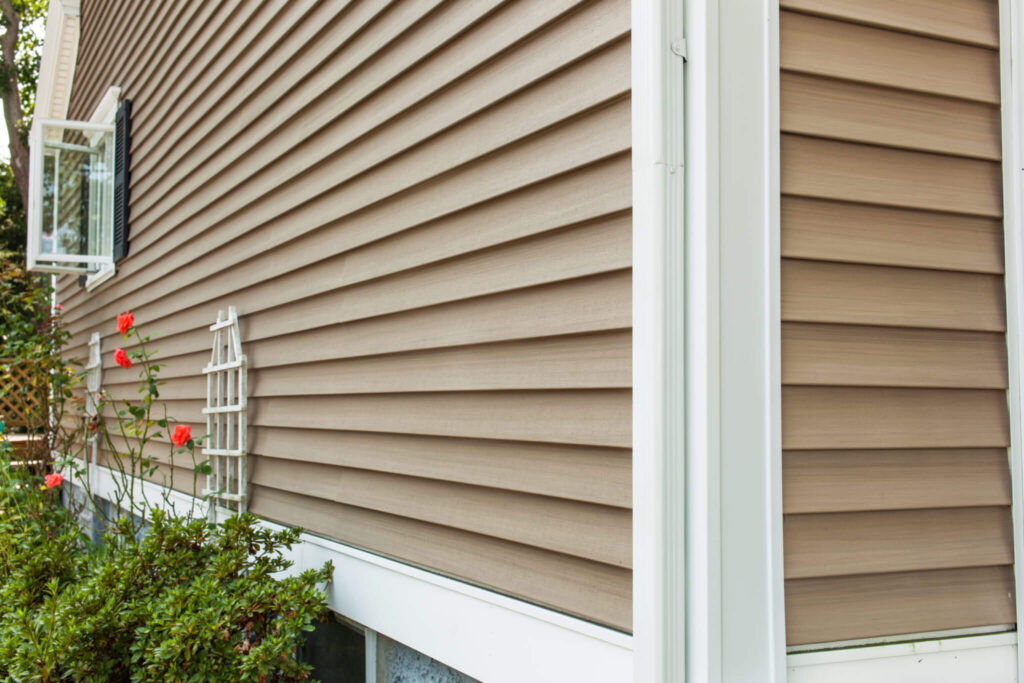Your home’s siding and roofing are its first lines of defense against the elements. From blazing summer heat to icy winter storms, weather conditions can take a toll on these critical components of your property. Understanding how different weather conditions affect your siding and roof will help you maintain their durability and aesthetic appeal. Additionally, knowing when and how to repair damage ensures your home remains a safe and comfortable haven.
The Impact of Seasonal Changes on Siding
 Siding protects your home from moisture, wind, and fluctuating temperatures. However, exposure to extreme weather can cause it to warp, crack, or fade. During the summer months, intense sunlight can weaken vinyl siding, causing it to expand and lose its shape over time. Similarly, wooden siding may dry out, leading to cracks or splinters.
Siding protects your home from moisture, wind, and fluctuating temperatures. However, exposure to extreme weather can cause it to warp, crack, or fade. During the summer months, intense sunlight can weaken vinyl siding, causing it to expand and lose its shape over time. Similarly, wooden siding may dry out, leading to cracks or splinters.
In contrast, cold weather brings its own set of challenges. Freezing temperatures can make siding brittle, especially when paired with the expansion and contraction caused by fluctuating temperatures. Ice and snow buildup can also lead to water infiltration, further compromising the integrity of your siding.
Common Weather-Related Roofing Issues
Roofing systems are particularly vulnerable to weather-related wear and tear. Heavy rains can erode shingles and expose the underlying structure, while strong winds may dislodge roofing materials entirely. Hailstorms can leave dents, cracks, or punctures in your roof, creating entry points for water.
In areas prone to snow, the weight of accumulated ice can strain the roof, leading to sagging or structural damage. Additionally, ice dams can form along the edges of the roof, trapping water and causing leaks inside your home.
Recognizing Signs of Siding and Roofing Damage
It’s crucial to inspect your siding and roof regularly, especially after severe weather events. Fading or discoloration of siding may indicate prolonged UV exposure, while buckling or warping points to moisture issues. Similarly, look for signs of mold or mildew growth, as they often signify hidden water damage.
When it comes to roofing, missing shingles, dark streaks, or granule loss on asphalt shingles should be addressed immediately. Interior signs such as water stains on ceilings or walls could indicate a roof leak requiring prompt attention.
Tips for Effective Siding Repair
When dealing with siding damage, begin by addressing any cracks or gaps to prevent further moisture infiltration. For wooden siding, replacing damaged boards and sealing them with high-quality paint or stain can extend their lifespan. If you have vinyl siding, opting for UV-resistant materials during replacement can minimize future fading.
Regular cleaning is essential to remove dirt, mold, and mildew. Pressure washing can be effective, but it should be done carefully to avoid dislodging the siding. Applying a protective coating or sealant can also add an extra layer of defense against the elements.

Ensuring Proper Roof Maintenance
Roof repairs often require professional expertise to ensure long-lasting results. Replacing damaged shingles promptly prevents water from seeping into the structure. For severe issues such as sagging or widespread damage, consider consulting a roofing contractor for a comprehensive inspection and repair plan.
Clearing debris from gutters and downspouts can prevent water from pooling on the roof and reduce the risk of ice dams in colder months. Trim overhanging tree branches that could fall during storms and damage your roof. Finally, scheduling annual roof inspections can help identify potential problems before they escalate.
The Connection Between Siding and Roofing
Siding and roofing work together to shield your home from harsh weather. If one component is compromised, it can affect the other. For instance, water damage from a leaky roof can travel down and harm the siding. Conversely, improperly sealed siding can allow moisture to penetrate and weaken the roof’s edge. Maintaining both systems ensures your home remains structurally sound and energy-efficient.